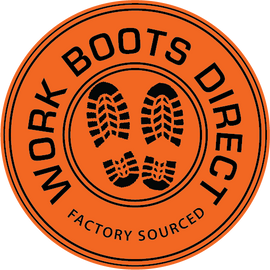H2: Why Leather Boot Care Matters
Your leather work boots aren’t just a uniform – they’re your daily armour. Whether you’re on-site, out in the bush, or walking factory floors, your boots take a beating.
Leather is tough, but it’s not invincible. Without proper care, even the best boots can dry out, crack, or wear down way too early. That means less protection for you – and more money spent on new boots.
H2: What You’ll Need
Before we start, here’s what you need on hand:
-
Soft bristle brush or damp cloth
-
Mild soap or specialised leather cleaner
-
Leather conditioner or boot oil (Joseph Lyddy Dubbin 125g)
-
Microfibre cloth
-
Water-repellent spray:
H2: Step-by-Step: How to Clean Your Leather Work Boots
Step 1: Knock Off the Dust and Dirt
Use a soft brush or damp cloth to wipe down your boots. Make sure to get into the seams and around the sole. Dirt and grime can wear down the leather and stitching over time.
Step 2: Gentle Wash
Mix mild soap with warm water or use a leather-specific cleaner. Wipe the boots down with a soft cloth—don’t soak them! Water can damage untreated leather.
Step 3: Dry Them Properly
Never leave boots in the sun or by a heater. Let them air dry in a shaded, well-ventilated area. Stuffing them with newspaper can help absorb moisture and keep their shape.
H2: How to Condition Leather Work Boots

Conditioning is like moisturising for leather – it keeps your boots flexible, water-resistant, and crack-free.
Step 1: Choose Your Conditioner
Use a product made for work boots—like beeswax-based leather conditioners or boot oils. We recommend Joseph Lyddy Dubbin 125g, which nourishes leather and repels water.
Step 2: Apply in Circles
Use a clean cloth to rub conditioner into the leather using small, circular motions. Focus on flex points and any dry or scuffed areas.
Step 3: Let It Soak In
Let the boots sit overnight. Wipe off any excess product the next day with a microfibre cloth.
Optional: Add a Water-Repellent Spray
Once conditioned, a water-repellent spray adds a protective layer. Try the Waproo Boot Waterproofing Spray for smooth leather or the Mongrel Suede & Nubuck Protector Spray for suede finishes.
H2: How Often Should You Clean & Condition?
-
Clean: Weekly if you’re in heavy-duty environments, or fortnightly for general wear.
-
Condition: Every 3–4 weeks, or monthly if your boots are used daily.
H2: Real Results: Tradies Who Made the Switch
Case Example: Steve the Carpenter (NSW)
Steve used to buy new boots every year. After starting a regular clean and condition routine with his Redback boots, he says:
“I’m 18 months into the same pair, and they still feel solid. That extra 10 minutes a month really pays off.”
Case Example: Tania the Warehouse Manager (VIC)
Tania manages a crew of 15 and recommends her team clean their boots every Friday.
“The floor is dusty, and without cleaning, the boots wear down fast. Our Olivers last longer now, and everyone’s feet are happier.”
H2: Signs Your Boots Are Crying Out for TLC
-
Leather feels stiff or brittle
-
Cracks forming around the flex points
-
Water no longer beads on the surface
-
Colour looks faded and dry
-
Soles starting to pull away from upper
If any of these sound familiar, it’s time to show your boots some love.
H2: Keep Your Investment Working for You
Whether it’s Blundstone, Mongrel, or Steel Blue, proper care can double your boot's lifespan.
Taking time to clean and condition regularly can:
-
Maintain waterproofing
-
Prevent cracking and stiffness
-
Extend the life of soles and stitching
-
Keep your feet dry, protected and comfortable
H2: Shop Quality Leather Work Boots
If your current pair are beyond saving, we’ve got your back.
Shop our collection of Aussie favourites built for long wear and easy care:
FAQs
Can I use household cleaners on leather boots?
It’s not recommended. Use leather-specific cleaners to avoid damage.
Do I need to waterproof my boots after conditioning?
Conditioning adds some water resistance, but a repellent spray gives better protection in wet conditions. We recommend Waproo Boot Waterproofing Spray or Mongrel Suede & Nubuck Protector Spray.
How long does it take to clean and condition boots?
The whole process takes about 15–20 minutes – a small investment for a long-lasting return.


